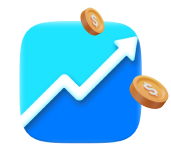- Chart
- Upturn Summary
- Highlights
- About
ProShares Short 7-10 Year Treasury (TBX)

- BUY Advisory
- SELL Advisory (Profit)
- SELL Advisory (Loss)
- Profit
- Loss
- Pass (Skip investing)
 Stock price based on last close
Stock price based on last close (see disclosures)
- ALL
- 1Y
- 1M
- 1W
Upturn Advisory Summary
12/12/2025: TBX (1-star) has a low Upturn Star Rating. Not recommended to BUY.
Analysis of Past Performance
Type ETF | Historic Profit 13.68% | Avg. Invested days 50 | Today’s Advisory Consider higher Upturn Star rating |
Upturn Star Rating  | Upturn Advisory Performance | ETF Returns Performance |
Key Highlights
Volume (30-day avg) - | Beta -1.16 | 52 Weeks Range 26.45 - 29.84 | Updated Date 06/29/2025 |
52 Weeks Range 26.45 - 29.84 | Updated Date 06/29/2025 |
About ProShares Short 7-10 Year Treasury
Exchange NYSE ARCA | Headquaters - | ||
IPO Launch date - | CEO - | ||
Sector - | Industry - | Full time employees - | Website |
Full time employees - | Website | ||
The fund invests in financial instruments that ProShare Advisors believes, in combination, should produce daily returns consistent with the Daily Target. The index includes publicly-issued U.S. Treasury securities that have a remaining maturity greater than or equal to seven years and less than or equal to ten years and have $300 million or more of outstanding face value, excluding amounts held by the Federal Reserve. The fund is non-diversified.

Note: This website is maintained by Upturn Corporation, which is an investment adviser registered with the U.S. Securities and Exchange Commission. Such registration does not imply a certain level of skill or training. Investing in securities has risks. Past performance is no guarantee of future returns. No assurance is provided as to any particular investment return, and you may lose money using our services. You are strongly advised to consult appropriate counsel before making any investments in companies you learn about through our services. You should obtain appropriate legal, tax, investment, accounting, and other advice that takes into account your investment portfolio and overall financial situation. You are solely responsible for conducting due diligence on a potential investment. We do not affect trades for you. You will select your own broker through which to transact. Investments are not FDIC insured, they are not guaranteed, and they may lose value. Please see the Privacy Policy, Terms of Use, and Disclosure for more information.
 Home
Home 
